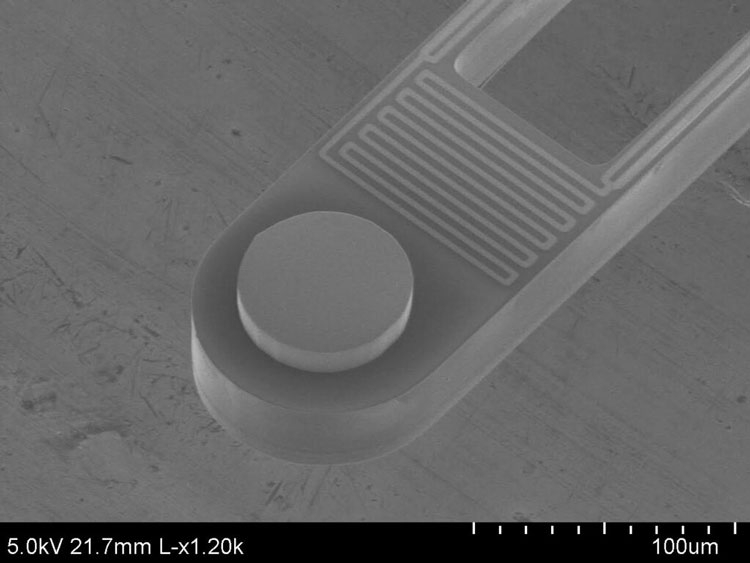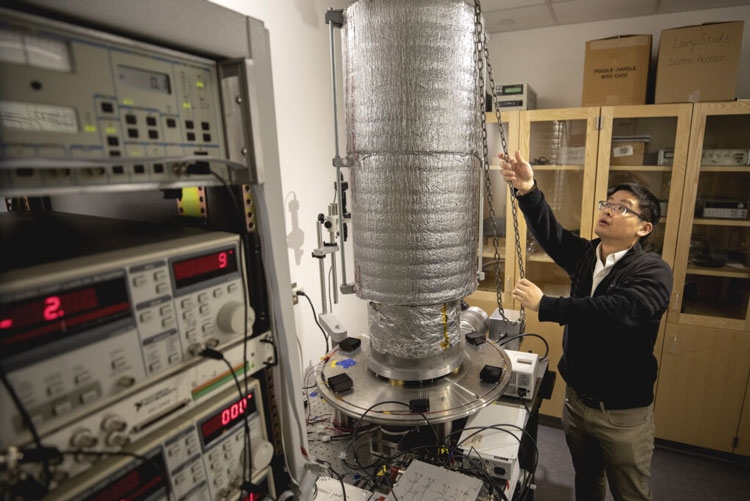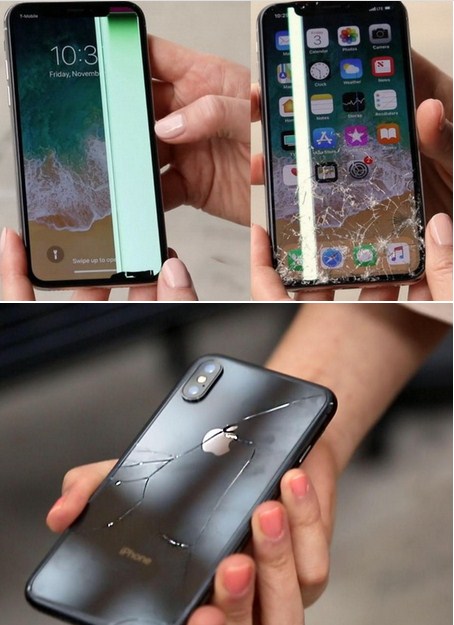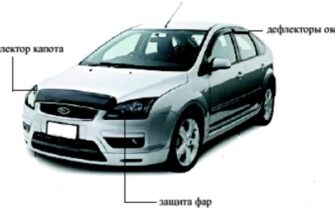LEDs can be cooled? Cool blue light, Yes. Of course, this is a joke. But in the past, Arthur Ashkin received the Nobel Prize in physics for cooling method using a laser. The LED worse? A group of scientists from the University of Michigan decided to put everything upside down and recreate the conditions, in which infrared LED could absorb thermal radiation from the object and, thereby, lowering its temperature.
Despite the microscopic size of the elements of the measuring installation (LED has been the size of a "rice grain", a calorimeter for fixing energy changes approximately 10 times less than), test bed was quite impressive (cm. pictured above). The problem is, that working (absorbing or radiating) LED surface should be located near the calorimeter at a distance less than the emission wavelength dynes. In the experiment the gap is 55 nm, and it will be a hindrance any vibrations around the installation - steps, vibration in the building, other. in a constant need for the gap is needed in order, that there was an effect of the near field coupling or evanescent, as well as to prevent the return of infrared photons back into the calorimeter.


The calculated cooling capacity pilot plant reaches 6 W / m2. In theory, this method can be cooled to 1000 W / m2, equivalent to sunlight per square meter of the earth's surface. If everything goes as it should, the proposed method of heat removal ever can be a good solution for cooling processors in mobile devices, which are becoming thinner and more powerful.












